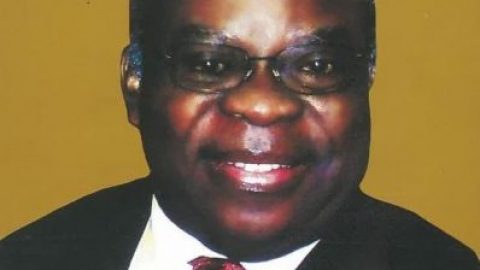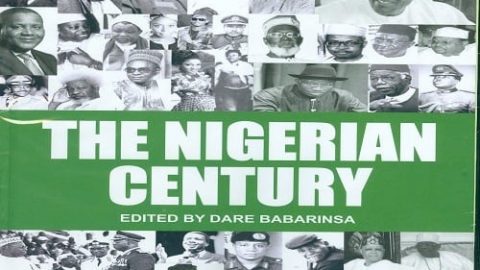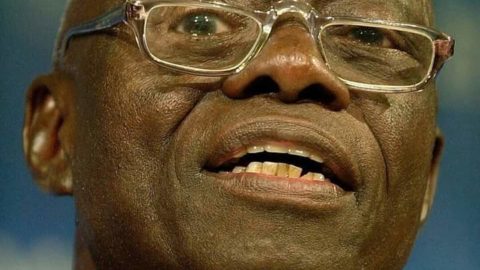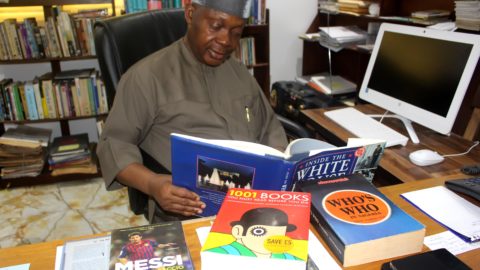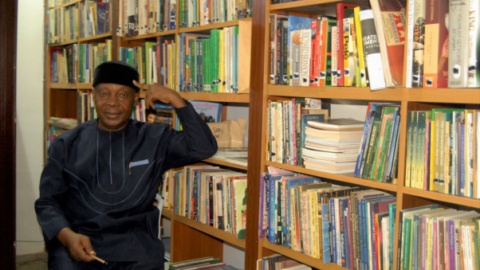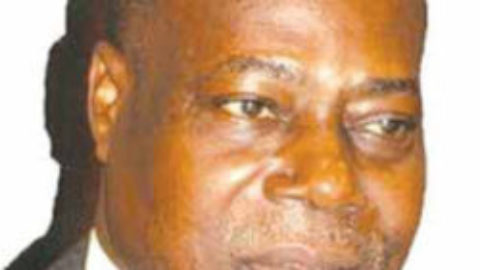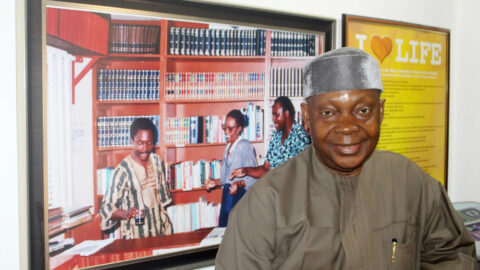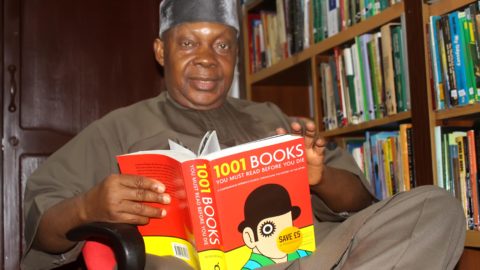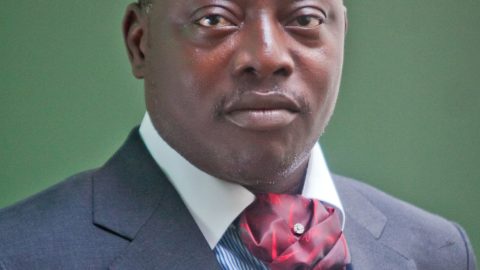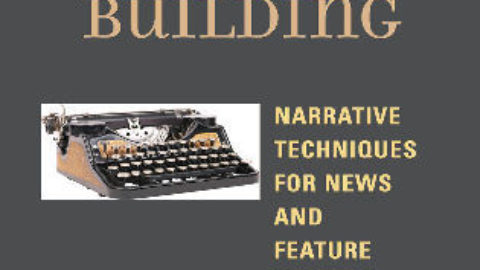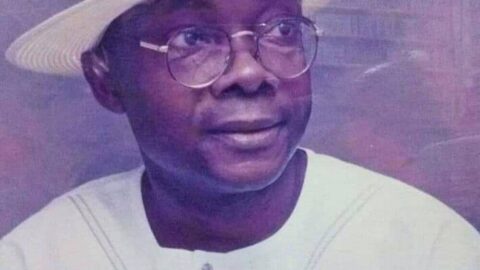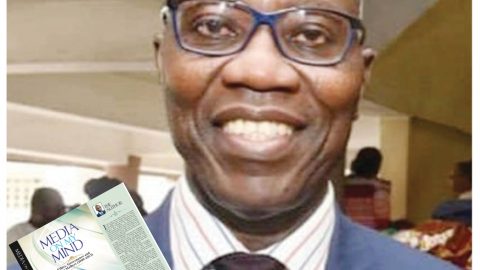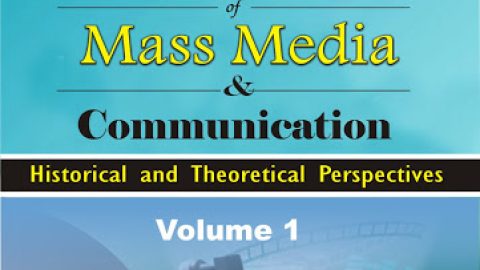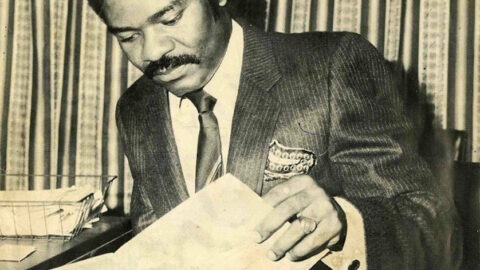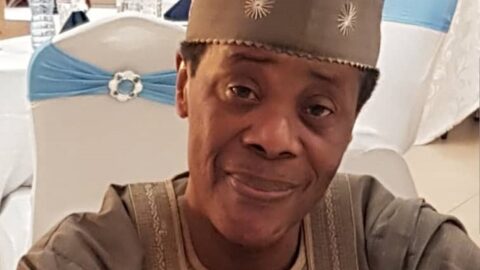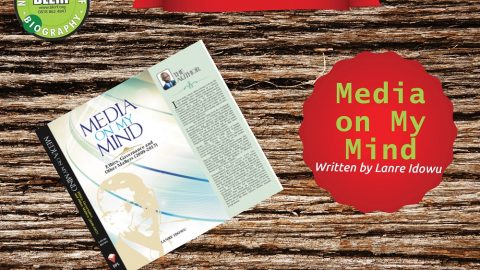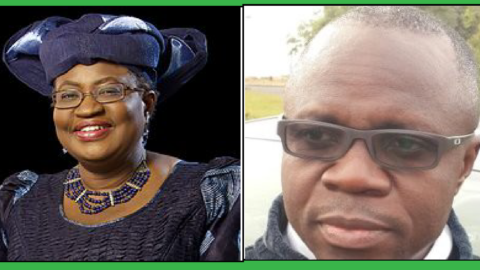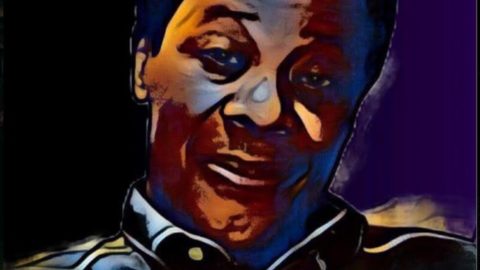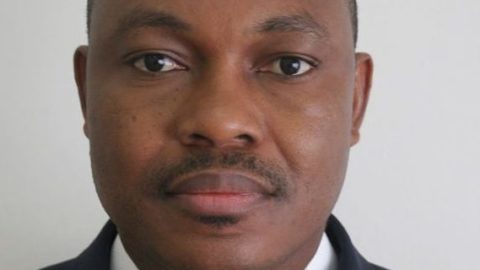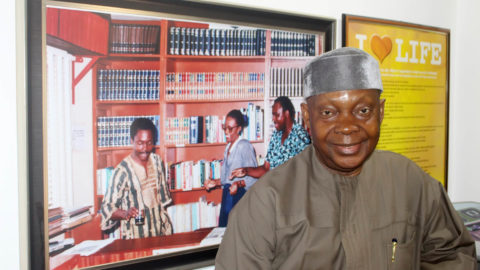A review of Battlelines: Adventures in Journalism and Politics
By Mr Sam Akpe, Consulting Editor, Book Reviews, BLERF.
Take a deep breath with me—pull in as much oxygen as possible. Hold it for a few seconds. Exhale s-l-o-w-l-y. You are about to embark on a journey—an intellectual adventure—that will surely electrify your thoughts and enrich your sense of history as you flip open the pages of Battlelines: Adventures in Journalism and Politics.
Chief Segun Osoba, the author of this 355-page book, has seen and dominated the worlds of journalism and politics—and even more. He is, unquestionably, the quintessential reporter and media manager; an accomplished politician and a persecuted political activist.
However, being a reporter brought him more joy than anything else. He says, without any ambiguity, “Reporting is my life. For me, being called a reporter is the greatest accolade. Reporting is the soul of journalism. To report is to be the eyes and the ears, the nose and the voice of news organisations. It is to bear witness.”
You are not about closing this book until you finish it; I promise you. When you suddenly swallow the last sentence of the last page, you are likely to scream in selfish disappointment: why is the story so short! No, the story is not short.
Rather your appetite is large; your expectation is overstretched because this is the story of Segun Osoba—a consummate journalist whose elevation to the top of the professional ladder has remained historically controversial. With various plots to eliminate him because of his political activism under the military, Osoba is more like that cat with several lives.
The book, Battlelines: Adventures in Journalism and Politics is the story of a life driven by hope, ambition, success and controversy. As aptly captured by the author, it is a story of vision and enterprise, a chronicle of plots and betrayals; a tale of pettiness and high mindedness.
This story tastes like history and flows like a song. It is a tale told by a journalist—a top-of-the-pack master of the calling. It is a bold tale by someone who faced persecutions and jealousies—someone whose professional drive and escapades were misunderstood by some and applauded by many.
From writing about people and events surrounding them, Osoba suddenly found himself being written about. People started telling the story of a cub-reporter who became a media manager. Osoba’s godfather in journalism, the late Babatunde Jose, says of him, “Professionally, he was my beloved son in whom I was very pleased.
There was no doubt about that.” Ray Ekpu, a respected authority in the business of journalism says Osoba—who is his senior—was a multi-talented journalist; “Osoba was a successful journalist, a successful reporter and a successful manager of journalists… He was a very good reporter, a crack reporter. He had the rare ability to get stories.”
Osoba stepped into journalism limelight in 1966 after the first military coup in Nigeria. This is how the Lateef Jakande, a journalist of monumental value, captured what happened, “After the coup, many wondered whether the prime minister was dead or had merely been kidnapped and held somewhere. Segun put paid to that speculation. Breaking the news took a lot of courage.
It was a very dangerous period in the nation’s history and for a newspaperman to be able to go to the various spots until he found the body of the assassinated prime minister was an act of great courage. Segun’s adventurism could have cost him his life because soldiers could easily have shot him. But then the reportorial adventurism was in character with Segun.”
Divided into three essential parts, this book explores in Part One, Osoba’s multiple close encounters with assassins as a political activist. It tells the story of his growing-up days, his exploits in journalism both as a reporter and as a manager—at the Daily Times, Herald and the Sketch newspapers. It ends with the story of the Customs lady who stole his heart—and kept it.
Part Two of the book is about a journey into the world of politics—his close unforgettable encounters with two political legends of Yoruba ethnic extraction, the late Chief Obafemi Awolowo and the large-hearted late Chief M.K.O. Abiola. It examines issues that surrounded the historic June 12 Presidential Election annulled by the military government; and the evil days of the late Sani Abacha. Part Three of the book takes the reader into Osoba’s personal involvement in political leadership by election.
Chapter one of the book is a gripping account of harms faced by the author because of his political activism under the danger-soaked military regime of the late General Sani Abacha, It is the account of his closeness to violent death.
He recalls, “I was a marked man. Death hovered over me like the sword of Damocles. I did not know a price had been put on my head.
The best sniper in Nigeria, leading a death squad made up of General Sani Abacha’s elite Strike Force, a team of efficient and ruthless killers trained in Israel, North Korea and Libya; had been detailed to eliminate me.”
Quoting authoritative sources, mentioning names, citing judicial confessions of hired killers, dates and locations; Osoba puts the reader in extreme blood-chilling suspense as he narrates instances that would have ended his life if not for divine interventions.
On several occasions, his houses were either burnt or ransacked; hired killers disguised as security agents and friends kept trailing and setting deadly traps for him. At many instances, he had to go into hiding within the country for as long as a year. The narratives on each instance of narrow escape and self detention have the smooth touch of great fiction writers. But this is real!
Chapter Two is about his birth and early days. Schools attended; friends made and people who exercised great and enduring influences over him are recalled and discussed. You want to know something about the “warmth and drive of Lagos?” Flip over to chapter three where Osoba writes about life in Lagos before the gutters got smelly.
Picking special historic events and places, the author tells a story of Lagos as a growing, bubbling city. It is an excellent recall of people and issues that shaped Lagos into what it has become—a daily expanding African business hub. His vivid recall of names, events, dates, issues and specific locations are impressive—a mark of great reporting.
Osoba’s sojourn in journalism started in 1964 when he was among the three employees recruited that year by the Daily Times of Nigeria. This was shortly after he passed his A-levels. The other two were Felix Sonaike, the late professor of mass communication, and Dipo Ajayi.
These were days when on-the-job-training preceded academic training. Two months after starting on-the-job-training, Osoba got an unexpected commendation letter from the great Peter Enahoro (Peter Pan) who was then the Daily Times editor.
It came with a prediction, “I think you have a flair for journalism and if you concentrate at this early stage on details, I have no doubt in my mind that you will make a successful career of this profession.”
Those prophetic words produced a resounding testimony from Enahoro many decades later when he recalled Osoba’s adventures in journalism; “Segun Osoba was my reporter at the Daily Times.
I remember him as a passionate, go-getting, indefatigable reporter with a sharp nose for news and the luck of being at the right place at the right time. Segun went into politics as a political reporter. And here he proved himself as a reporter with a sharp nose for news. He broke big stories. He was usually at the right places at the right time… Osoba is truly a reporter…. He was very resourceful, very quick.”
In 1965, Osoba was sent to the International Press Institute for a diploma course at the University of Lagos. Other training opportunities took him to London, Indiana University School of Journalism in the US, Thompson Foundation in Cardiff and later, Nieman Fellowship for post-graduate training at Harvard University.
Osoba was a noted exclusive story writer. He started developing a network of contacts who helped grew his career. With his Vespa Scooter motorcycle and a personal telephone at home, he was easy to reach by sources. Gradually, he rose to become the deputy editor of Daily Times. Osoba’s trouble started when General Yakubu Gowon was toppled in a military coup.
He dared the curfew, activated his sources in the military and got the scoop of all scoops while his superiors slept at home. This led to a change in cover story; and a sudden change in the editorship of the paper because two days later, Osoba’s professional and heroic efforts were rewarded with elevation as editor of Daily Times—black Africa’s leading independent newspaper. It was also the beginning of a controversy that divided the huge journalism family.
One day during the Civil War, Osoba was called to the scene when Nnamdi Azikiwe, Nigeria’s former ceremonial president, but legally a Biafran, surfaced in Lagos when the plane he flew from Amsterdam made emergency landing in Lagos instead of Monrovia where it was billed to land.
Osoba had a bigger news story when by chance, a phone he wanted to use at the airport suddenly rang, he picked it and the Head of State, General Yakubu Gowon, was on the line. When he reported their conversation the following day in Daily Times, he was promptly arrested and locked up for daring to speak with the head of state!
Chapter Five of the book is on the Nigerian Civil War and Osoba’s exploits. In Chapter Six, while crisis rocked the Daily Times due to Osoba’s controversial elevation, an offer came for him to move over to the technically dead Kwara State-owned Herald newspaper.
He hesitated but accepted the offer after a lot of persuasion from the very top. He turned Herald newspaper into readers’ delight with exclusive stories starting with the arrest of a lead coup plotter, Buka Suka Dimka. Again, another controversy erupted. It was professionalism versus local politics. He left.
Herald’s loss was a huge gain to the Sketch newspaper where Osoba again demonstrated his media management skill. That is in Chapter Seven of the book.
Despite his previous travails, Osoba, in Chapter Eight, eventually returned to the Daily Times. That was in 1984. In 1988, he was almost unceremoniously sacked until he pulled strings of well-cultivated contacts and sustained relationship within the military and neutralised the sack.
It was a test of raw might. Osoba won! When he finally retired, it was on his own terms. Chapter Nine of the book is about how he met his wife—the only wife of his life. It’s thrilling. Osoba writes this chapter with the passion of a time-tested lover.
Part Two of the book is about political relationships. It starts with, “Awo, Our Unforgettable Hero.” The narrative on relationship with Awo makes an amazing read. It’s in-depth; and very personal. He pictures Awo as a divine being even before meeting him.
When he finally met Awo in the course of his career, he found a way into the politician’s inner circle and got soaked in his political fervour. It was here, in the words of Enahoro, that Osoba started learning the ropes in political leadership. Awo was an invaluable story source and political inspiration to Osoba. He christened Osoba, Adenaike and Ajayi as the Three Musketeers of Nigerian journalism. Awo’s death on May 9, 1987 was quite devastating to the Three Musketeers.
You may want to know how Chief M. K. O. Abiola became Awo’s enemy, or how they restored their relationship. They are all captured in chapter 12, which opens with a beautiful story of Abiola’s visit to Awo one day demanding lunch. Since Awo was never in love with afternoon meals, Abiola had something special prepared for him.
After savouring the meal, he declared that he was in Awo’s house to ask for forgiveness over all his political transgressions. The old man was touched. He agreed to forgive Abiola. He also prayed for him.
The book reveals that Osoba’s relationship with Abiola started on a sour note. The story has it that Abiola spearheaded a campaign of blackmail against Osoba based on a forged document which Abiola did not bother to scrutinise.
For that reason, Osoba lost his job at the Sketch newspapers. Of course, he later got the job back based on political turn of events. But one day, on board a London-bound flight, Abiola and Osoba reconciled. That was round one.
The second round of disagreement surfaced during the contest for the presidency of the Newspaper Proprietors Association of Nigeria. Abiola was in the race with Osoba. When Osoba won, enmity ensued at different levels; including a quarrel over impounded newsprint.
The relationship, in the words of Osoba, was at different times frosty, fiery and tension-soaked until he left the Daily Times. At the next election, Abiola took over from him as President of NPAN. When Osoba entered the race for the governorship of Ogun State, Abiola decided to sponsor a fellow Muslim for the same office and gave him N500, 000; which was a huge amount in those days.
Osoba heard of it and drove to Abiola’s house. With Simbiat—Abiola’s wife—present, Osoba confronted him and demanded his version of the largesse. Abiola’s hesitation was defeated when Simbiat brought a cheque book for his signature. Osoba was enriched.
This chapter ends with Abiola’s entry into the presidential race, how he was registered as party member without his consent, the Jos Convention, how he picked Baba Gana Kingibe as running mate and the build up to his ill-fated victory at the polls.
Osoba’s explicit narration on how June 12, 1993 Presidential Election was contested, won and annulled has the gripping details of crack reporting. The story is told with fresh perspectives—by someone who was a participant in the making of the doomed historic event.
It is a story of hope and betrayal; a story that caused unprecedented national political and tribal commotion. The question of how and why Abiola left Nigeria for London in the heat of the crisis is well captured in the book; plus the undesirable fate that enveloped the nation after nine governors from the north dropped a bombshell.
Accusations against and acquittal of Osoba over alleged betrayal of veteran labour chief, Frank Kokori, is laid bare in Chapter 14 of the book. The next chapter is entitled Dark Days Under Abacha. It exposes the intrigues and deceptions that led to the emergence and sustenance of the administration of the man described by the New York Times as a beacon of brutality.
It was this brutality that led to the birth of NADECO—the National Democratic Coalition. For being bigwigs of the group, Osoba and retired Commodore Dan Suleiman were arrested, detained and charged to court. Then came the Epetedo Declaration on June 11, 1994 after which Abiola was declared wanted, arrested and detained until he died on July 7, 1998.
Part Three closes this book with discussions on four clear topics beginning with Governance and Resource Management; Obasanjo, Ogun State and the 2003 Election; Official Torment in Ogun State and just before the Epilogue, Osoba presents detail reportage on the formation of his party, the All Progressive Congress.
A beautiful book—the work of a celebrated reporter. It tackles issues; responds to allegations; answers age-old questions and will surely creates controversies that could result in other books. Yes, there are avoidable typographic errors and factual repetitions though none of these has in anyway affected the boldness of the story as told by Osoba.
No matter the fact that two-thirds of it is devoted to politics—both its practice and activism—this book is about excellence in journalism. It is the story of a man whose training, efficiency, professionalism, ambition and accomplishment in the job was almost unprecedented in his era.
END


